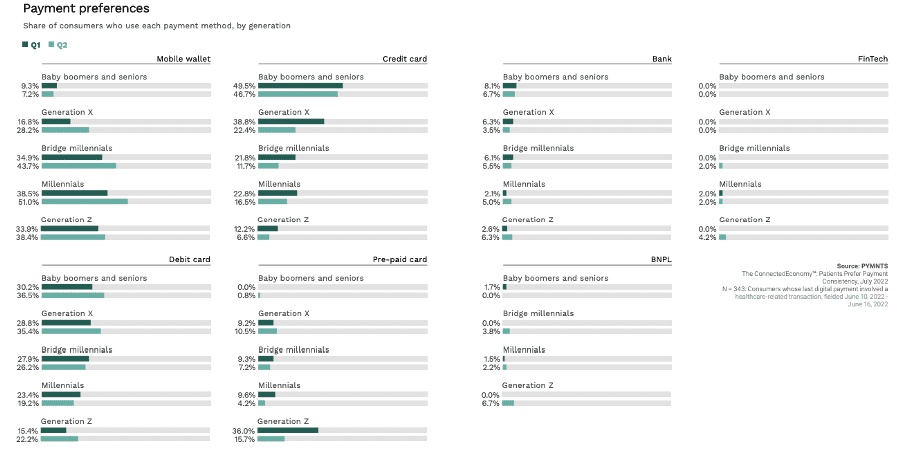Looking back at the trends of 2022, digitization of healthcare achieved milestones in how consumers pay for medical treatments, with younger demographic groups taking the lead.
Much occurred between mid-year and year’s end, which is summarized in the report “How Digital Has Changed the Consumer Healthcare Experience and Expectations: June 2022 – December 2022 Recap,” a PYMNTS and CareCredit collaboration.
Based on a half-dozen reports published between June and November, totaling nearly 16,800 survey responses, the body of research summarized in this rollup report looks at important trends in digital access to and engagement with digital tools to pay medical bills.
Among the most striking findings offered in the report is how younger demographic cohorts — millennials, bridge millennials and Generation Z consumers — embraced digital payment options to make their out-of-pocket medical costs easier to manage.

“Millennials, bridge millennials and Gen Z patients led the way in using digital payment methods at the doctor’s office,” the report stated. “They are more likely to pay healthcare expenses via digital wallets than credit or debit cards combined.”
Data showed that 50% of millennials used a mobile wallet to pay for healthcare services during the second quarter of 2022, as did 38% of Gen Z. That’s compared to only 7% of baby boomers and seniors who paid healthcare bills using digital wallets.
Younger consumer-patients are more likely to be living paycheck to paycheck and struggling with monthly bills, which correlates to their use of digital payment options at the doctor’s office.
“It may come as little surprise that 60% of consumers who live paycheck to paycheck with issues paying their bills report using digital healthcare options,” according to the report. “This share compares to 53% of consumers living paycheck to paycheck without issues paying their bills and 46% of consumers who do not live paycheck to paycheck who do the same.”